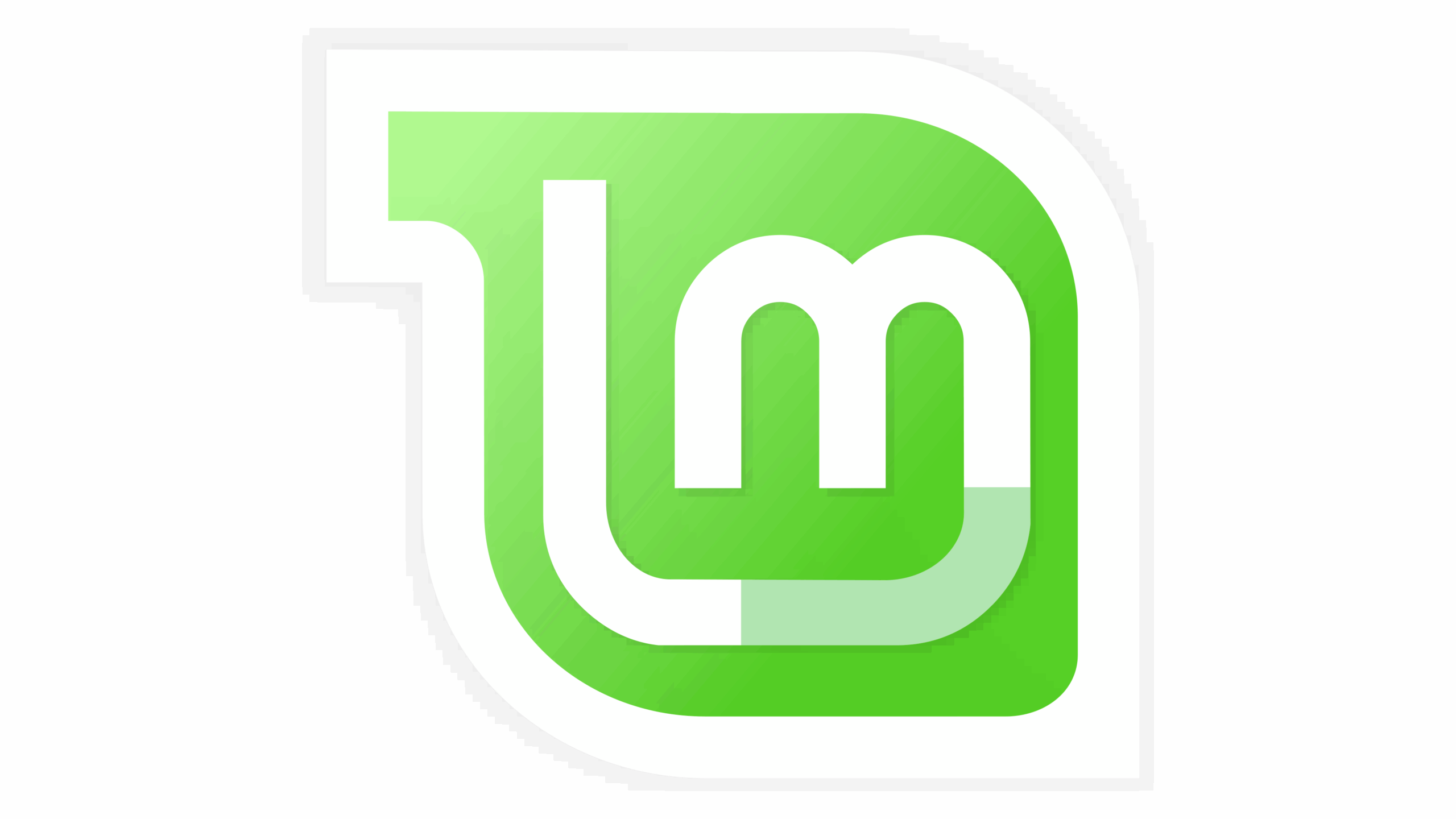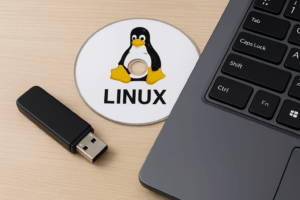What is Linux Mint?

Linux Mint is one of the most popular Linux distributions worldwide, focused on simplicity, stability, and user-friendliness. It is based on Ubuntu (or Debian) and developed by a community led by Clement Lefebvre. The first version was released in 2006, and since then Mint has gained a strong user base looking for a Windows alternative that "just works."
Linux Mint is ideal for everyday users as well as more advanced users who want a stable and powerful system:
- As a daily desktop system for work, internet, gaming, and multimedia.
- For older computers thanks to lightweight desktop environments (like Xfce).
- For developers and tech-savvy users who appreciate access to Ubuntu and Debian packages.
- For users switching from Windows who want a familiar desktop experience.
How to Install Linux Mint – Complete Step-by-Step Guide
Linux Mint is one of the best beginner-friendly distros – stable, clear, and Windows-like. This guide will walk you through installing Linux Mint step by step, from downloading the ISO file to your first boot.
What you’ll need:
- USB flash drive (at least 4 GB, 8 GB or more recommended)
- Computer capable of booting from USB
- Internet connection
- Linux Mint ISO image (free to download)
- Tool to create bootable USB (e.g., Rufus, balenaEtcher)
1. Download the Linux Mint ISO
- Visit the official website: https://linuxmint.com/download.php
- Choose an edition (we recommend Cinnamon if you’re unsure)
- Click “Download” and select the mirror closest to your location
- Download the file, e.g., linuxmint-21.3-cinnamon-64bit.iso
 2. Create a bootable Linux Mint USB
2. Create a bootable Linux Mint USB
Here’s a video showing how to create a bootable Linux Mint USB.
Using Rufus:
- Download Rufus from https://rufus.ie
- Insert your USB flash drive and open Rufus
- Set the following:
- Device: select your USB drive
- Boot selection: select the downloaded Linux Mint ISO
- Partition scheme: GPT (for newer PCs with UEFI from 2012+) or MBR (for older BIOS/UEFI-CSM systems)
- File system: FAT32
- Click START and confirm to erase the USB
Warning: The USB drive will be completely erased!
How to check if your PC uses UEFI or BIOS (Windows & Linux)
Windows:
- Press Win + R, type
msinfo32and hit Enter - In System Information, find “BIOS Mode”:
- UEFI = modern mode
- Legacy = old BIOS mode
How to check if your disk is GPT or MBR:
- Press Win + X → Disk Management
- Right-click your disk (e.g., Disk 0) → Properties
- Go to Volumes tab → Partition style:
- GUID Partition Table (GPT) = modern
- Master Boot Record (MBR) = old style
3. Boot from the USB – step by step
- Insert the USB into a powered-off PC
- Power on and immediately press the key to enter Boot Menu (varies by brand):
- F12 (Dell, Lenovo, Acer)
- ESC (HP)
- F11, F8, F10 or DEL (depends on brand)
- Select your USB drive and press Enter
If Boot Menu doesn’t work:
- Enter BIOS/UEFI setup (usually DEL, F2, or ESC; some Lenovo need Fn+F2)
- Find Boot Menu or Boot Options and enable it
- Save changes (usually F10) and restart
Note:
- You might need to disable Secure Boot to boot Linux USB
- On new PCs, you may also need to enable CSM if using MBR USB
 4. Installing Linux Mint
4. Installing Linux Mint
- After booting, choose “Start Linux Mint”
- When loaded, click “Install Linux Mint” icon
Language and keyboard layout:
- Select your language (e.g., English)
- Select keyboard layout
Network:
- Connect to Wi-Fi or Ethernet (Internet not required but recommended for updates)
Installation type:
- Erase disk and install Linux Mint – best for beginners
- Install alongside Windows (dual boot)
- Something else – manual partitioning (advanced)
5. Optional: Manual disk partitioning (advanced)
Recommended layout:
| Partition | File system | Size | Mount point |
|---|---|---|---|
| /boot/efi | FAT32 | 300 MB | /boot/efi |
| swap | swap | 2–4 GB | – |
| / | ext4 | 20+ GB | / |
| /home | ext4 | rest | /home |
6. Dual boot with Windows
- Choose “Something else” and use free disk space
- Keep Windows partitions intact!
- Create new partitions for Mint (/ , swap, /home)
- Don’t format EFI partition
- Don’t touch Windows partitions (NTFS)
Encrypted install:
- Check “Use LVM” and “Encrypt the installation”
- Enter a strong password
7. User setup
- Enter your name and computer name
- Create username and password
- Choose automatic login if desired
8. Start installation
- Click “Install Now”
- Confirm disk changes
- Wait a few minutes
- When finished, click “Restart Now”
- Remove USB before reboot
9. First boot
Congratulations! After reboot, you’ll see the Linux Mint login screen. Enter your password and enjoy your new system!
Bonus: What next?
- Update system:
sudo apt update && sudo apt upgrade
- Open Software Manager and install favorite apps:
- VLC, GIMP, Steam, Thunderbird, Chromium
- Explore, customize, and enjoy a stable and fast Linux!
What is Linux Mint suitable for?
- Beginners wanting a smooth Windows transition
- Everyday users for work, browsing, multimedia
- Schools, homes, seniors needing stability and ease
- Developers wanting a clean, fast system
Which Linux Mint editions exist?
- Cinnamon (flagship)
Modern, elegant, visually appealing desktop designed for Mint with full integration. Ideal for newer PCs. - MATE
Lightweight classic desktop based on GNOME 2. Balanced performance and appearance. Good for mid-aged PCs. - Xfce
Lightest Mint edition focused on speed and low resource use. Perfect for old or low-power computers.
Linux Mint Debian Edition (LMDE)
- Debian-based alternative to Ubuntu-based Mint
- Backup plan if Ubuntu becomes unusable
- Same Cinnamon desktop but Debian under the hood
What comes with Linux Mint?
- Up-to-date and stable Linux kernel
- Desktop environment of your choice (Cinnamon, MATE, Xfce)
- Software Manager for easy app installation
- APT package system compatible with Ubuntu .deb packages
- Pre-installed apps: Firefox, LibreOffice, Rhythmbox/Celluloid, Nemo file manager, GIMP, Timeshift backups
- Easy driver and update management
Advantages of Linux Mint
✅ User-friendly interface – familiar to Windows users, no unnecessary changes
✅ Fast and stable – well optimized, no bloated effects
✅ No ads, no telemetry – no tracking or forced packages
✅ Great multimedia support – codecs included out of the box
✅ Choice of desktop environments – from lightweight to modern
✅ Easy updates and system management
✅ Ubuntu compatibility – huge software library
✅ Backup and restore with Timeshift
Disadvantages
❌ Smaller development team than Ubuntu – some new features arrive slower
❌ Based on Ubuntu – inherits some Ubuntu quirks (kernel or library changes)
❌ Less focus on servers or cloud – Mint is strictly a desktop distro
